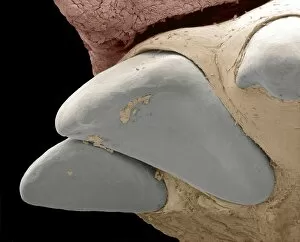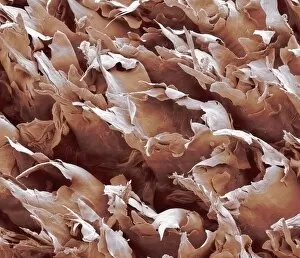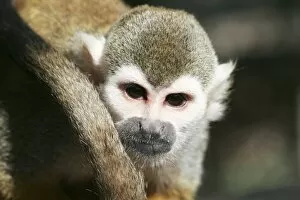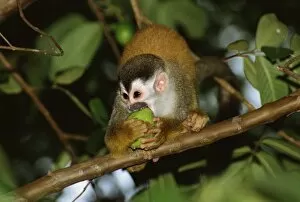Squirrel Monkey Collection (#2)
The squirrel monkey, also known as the Black-crowned Central American squirrel monkey or Ecuadorian squirrel monkey
For sale as Licensed Images
Choose your image, Select your licence and Download the media
The squirrel monkey, also known as the Black-crowned Central American squirrel monkey or Ecuadorian squirrel monkey, is a fascinating primate found in various regions of South America. With its distinctive black crown and lively nature, this species captivates onlookers wherever it goes. In the lush rainforests of Brazil's Amazon state, you can spot the Squirrel monkey swinging effortlessly through the trees. Its agile movements and playful demeanor make it a true acrobat of the jungle. Meanwhile, in Costa Rica's Central America, another variant of this adorable creature called Central American they are be found gracefully perched on branches. Venturing into Yasuni National Park in Orellana, Ecuador reveals an even more diverse population of these charismatic primates. The Ecuadorian squirrel monkeys showcase their stunning features against the backdrop of vibrant green foliage. Whether they are sitting peacefully on tree branches or actively feeding while carrying their infants on their backs, these monkeys exhibit remarkable intelligence and nurturing instincts. Interestingly enough, even decades ago during 1959 when space exploration was at its peak with Army Ballistic Missile Agency leading the way for technological advancements; there was still time to appreciate these incredible creatures. A photograph titled "Cradle" captured by them showcases a beautiful moment between a primate mother and her baby – reminding us that love transcends all boundaries. From their unique physical characteristics to their social behaviors within tight-knit communities, squirrel monkeys never fail to leave a lasting impression on those fortunate enough to encounter them. These captivating creatures serve as a reminder of our shared connection with nature and inspire us to protect our fragile ecosystems for generations to come.






